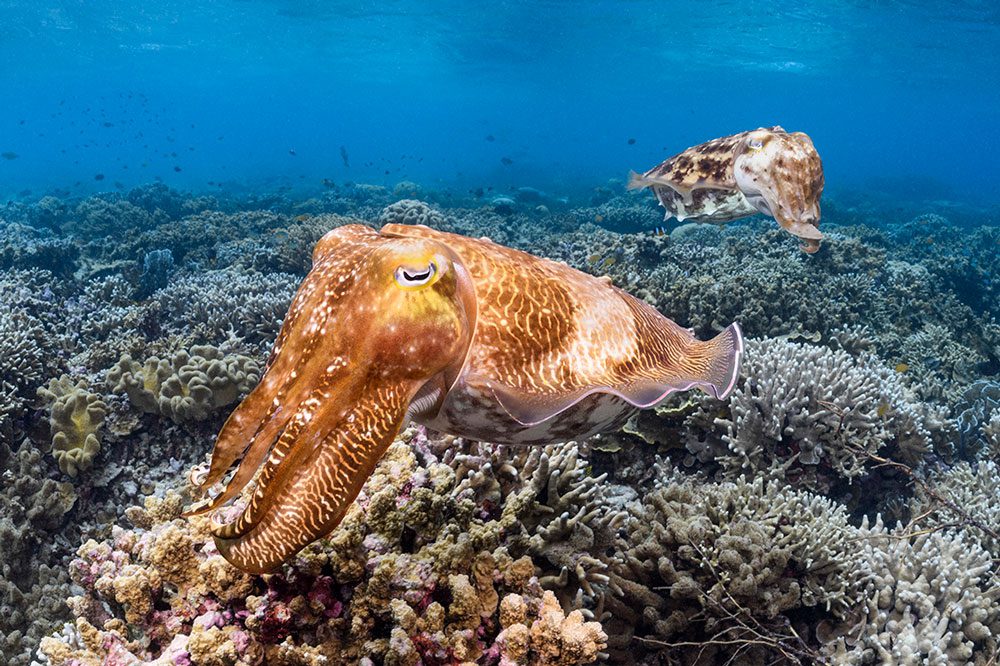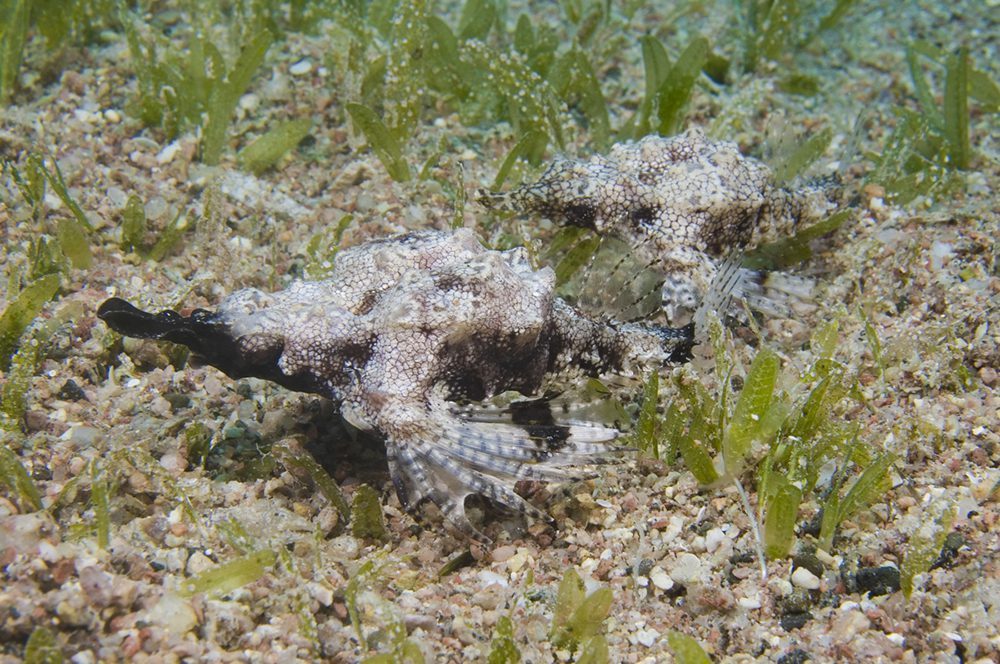Wakatobi's iconic Jetty Bar is a favorite place to gather and enjoy a libation while watching the sun sink towards the horizon.
But there's another reason why some guests show up there in the late afternoon. It turns out that the end of the jetty is also the perfect starting point for a different type of liquid refreshment – twilight snorkeling.
And for this relaxation, you won't need ice or glassware, just a mask, fins, and snorkel.

Twilight snorkeling showcases the reef during a period of heightened activity. Marine biologists call this a crepuscular period — the time leading up to and just after sunset. This is when many types of marine life active during the day are still moving about as they get ready to bed down for the night.
Meanwhile, the first members of the “night shift” emerge from hiding places. It’s a time of increased activity for a range of keen-eyed predators that take advantage of the low light conditions to stage one last hunt. At the same time, some species consider the mood ideal for courting and spawning.

Begin your snorkeling explorations at the jetty's secure stairway. From this starting point, you may notice that increasing absence of the colorful species found during the day —the butterflyfish, damselfish, angelfish, anthias and so forth.
Some will burrow into the sand or tuck themselves into coral nooks; others make their way to the outer edge of the reef. Follow along and you may see them disappear into the shadowed ledges and crevices of the outer slope, which is still revealed by the day's last rays of sunlight.

One of the more intriguing characters you may see heading for bed is the Picasso triggerfish. After a full day of munching on hard-shelled prey, this highly territorial fish will retreat to a favorite crevice.
Once settled in, the Picasso will extend its barbed dorsal fins, locking itself in place while also presenting an unpalatable spike to thwart the jaws of would-be predators.

As the shadows lengthen perceptions of motion and depth decrease, putting visual hunters at a disadvantage. But there are some like the broadclub cuttlefish that exploit these low light conditions.
These cephalopods hunt primarily in daylight, using their signature vivid color changes to mesmerize their prey. But broadclubs also possess excellent low-light vision that allows them to extend their patrols beyond sunset.
Don't expect a light show, however. In the twilight these cuttlefish will likely switch to stealth mode, using their adaptive hides to blend into the muted colors of the reef as they sneak up on an evening snack.

Another stealthy and cryptic predator that you have a better-than-average chance of locating in the twilight is the pegasus seamoth, which is often active around the Wakatobi jetty in early evening. In bright sunlight, the coloration of this slow-moving bottom dweller creates near-perfect camouflage against sand in the seagrass.
Though never easy to spot, the evening's fading light can provide subtle changes in contrast that reveal the seamoth's movements. If you do locate one, take a closer look, because they typically travel in pairs.
Soon, last light will signal the end of your explorations. As you make your way back to the exit stairs, guided by the lights from the jetty bar, you may catch glimpses of eels emerging from their lairs, and notice the growing number of crustaceans beginning their scuttling nocturnal marches.
These are the tactile and sensory hunters that consider revealing sunlight to be a liability and await the relative security of darkness.

Bring a dive light to use after the sunset and the show can go on with a new cast of characters. Or step out for a refreshing shower, a relaxing libation and the always-delicious culinary temptations of Wakatobi's chefs.

